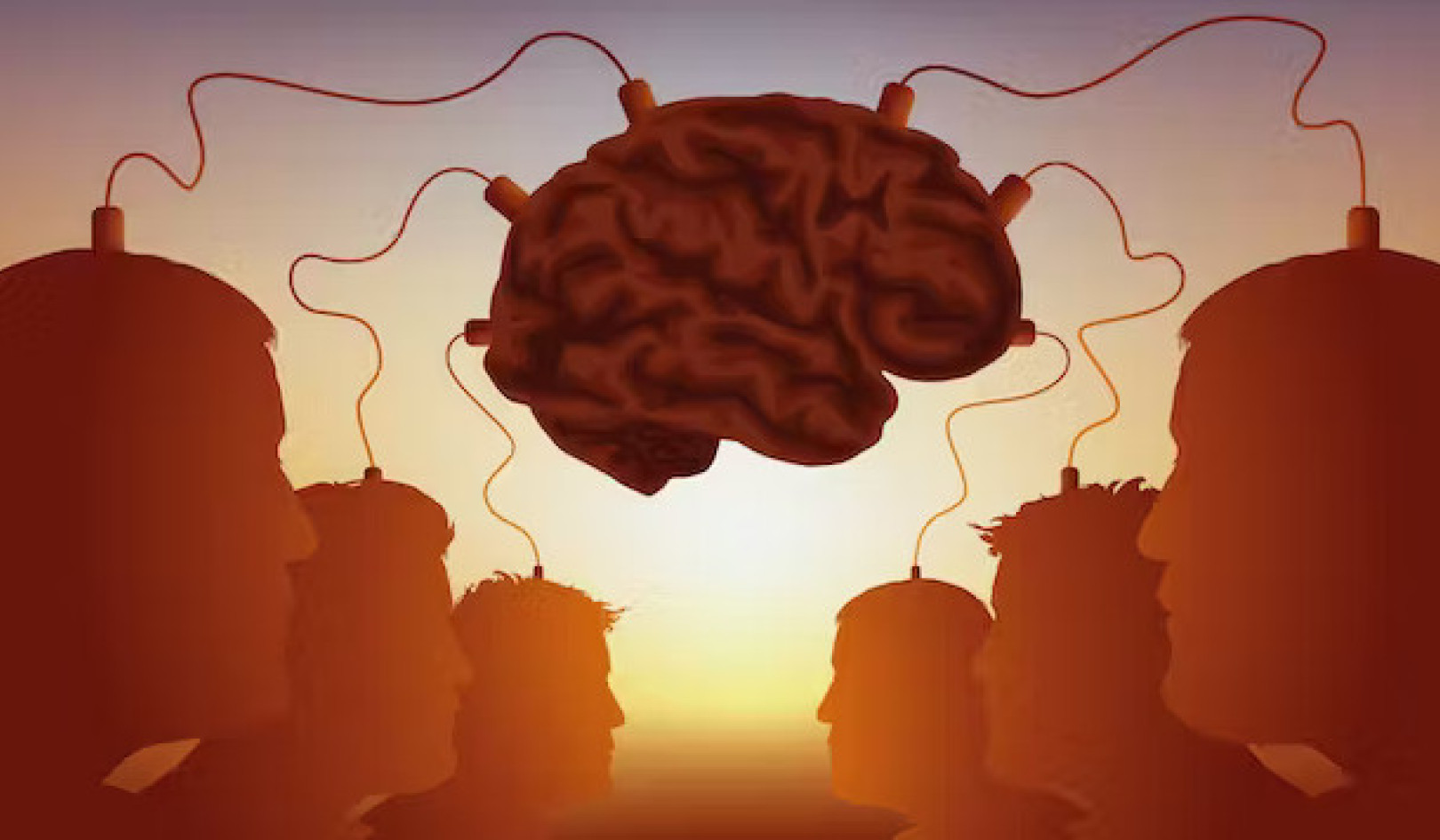Continued from Part I
CHALLENGE 5: CHILDREN
It is common for children to replace the partner as our primary linkage. They are a marvelous gift but, just because they are so fascinating and delicious, they are also an almost irresistible distraction from the primary relationship. For many of us, it is the easiest thing in the world to shift our primary linkage from our partners to our children.
Basically, when a baby is born, the mother must bond to the new infant so that it will flourish. This usually means that, at least for a while, she will shift her primary linkage from the relationship to the child. These days with the increasing involvement of fathers in child rearing, the father is likely to shift his primary linkage to the child as well, for the same reason the mothers have done so in the past. It feels good.
It is absolutely necessary for both parents to realize how important it is for themselves, their relationship, and the well-being of their children, to stay connected to one another. This means that they will do whatever is necessary to maintain their own linkage.
When the linkage between partners is broken because one partner shifts the primary linkage to the child, the other partner is left hanging out alone, like an atom with an unpaired electron, commonly known as a free radical. This "free radical" will look for someone or something else to bond to. Then any of these other "challenges" we have been discussing may become the object of the primary linkage.
Sometimes the primary connection remains within the family but instead of being between the parents, it shifts to the children. Each partner links to a different child. The mother's primary connection may be to her son and the father's to his daughter. One parent may connect to the most successful child while the other parent's primary connection is to the most needy child. If there is a single child, it sometimes happens that both parents' primary linkage is to the same child.
We've observed that something similar to this can happen with pets. The primary connection remains in the household but it shifts from between the partners to the pet. There are even some people whose primary linkage has always been with their pets rather than with their partners. You can see them pouring all their loving, nurturing, personal energy into their pets -- petting them, kissing them, talking to them in endearing tones -- while the relationship with the partner is less physical, more cut off, more impersonal, and more businesslike. Again, it's not a question of whether or not to love your pets, it's just a question of who has your primary linkage.
If you have children, ask yourself these questions: Is your primary linkage to your partner or to your children? What about your partner's primary connection, is it to you or to a child? When did you and your partner last take time to be alone and to reconnect in intimate ways that did not include your children?
CHALLENGE 6: DOING OR BEING
Most people have within them a pusher that pushes them to do more and more. They must learn more, accomplish more, earn more, be better, be smarter, expand, succeed, be the best. For our pushers, standing still is unacceptable. We must never waste a moment, we must always be doing something. When we reach one goal, our pusher sets another. There is no rest, just constant doing. Unfortunately, this constant action makes linkage impossible.
You have to stop moving in order to connect to another human being. This is not encouraged in our culture. We are not given permission to slow down long enough to connect with one another and to nourish our relationships. As a matter of fact, we are encouraged to move faster and faster. We're like the Red Queen from Alice in Wonderland, running as fast as we can to stay in the same place.
Now there is a new challenge to relationship. We have a New Age pusher, who, in addition to everything else, is pushing us toward growth, consciousness, greater spirituality, and, for the most ambitious of us, enlightenment. This New Age pusher will stop at nothing in its quest for growth. It has us learning about ourselves, working with our process, paying attention to our dreams, doing our spiritual practices, and following a myriad of new rules. It thinks nothing of breaking the connection to our partners and taking us away from them for months at a time.
Again, it is a matter of linkage. If the relationship connection remains primary, the partners will be able to handle the demands of this New Age pusher. However, if the primary linkage moves elsewhere, we are no longer linked to our partners and the relationship is severely challenged. When this happens, there is a chance that the relationship will not survive as our partners feel abandoned by the loss of connection and look for their linkage elsewhere.
CHALLENGE 7: COMPUTERS
Computers are the new mystical lover. There are many among us who cannot resist the glow of the computer screen or the lure of the Internet. There is so much to do, to see, and to learn. There is so much to explore. There is an endless opportunity for play. You plan to take a moment to check your E-mail or to reconcile your bank account, and five hours later you drag yourself to bed, exhausted but happy, hardly remembering your partner's name.
We have come to think of the computer as the new mystical lover, a seductive creature who, always awake and available, sings a siren song at all hours of the day and night.
Again, this is a question of linkage. No matter what you are working at, it's good-bye to your partner as your primary linkage shifts to the computer. Once when we were speaking about this as having an almost addictive quality, a computer expert told us he had heard that when people work on computers their brains move into a very satisfying alpha rhythm that is literally addictive. We do not know whether or not this is true, but it certainly seems that way.
There are many levels to this new fatal attraction. Some people have an intermittent linkage problem that does not constantly detract from their relationship. When they are working on their computers, that is their primary linkage but they are capable of returning and connecting to their partners. There are others, however, for whom the connection to the computer, and to the things that they access through their computer, is truly the primary linkage in their lives.
To check this out, ask yourself where you have more fun, with your computer or with your partner.
CHALLENGE 8: ALCOHOL AND DRUGS
Partners often use drugs or alcohol to relax with one another or to enhance and intensify their relationship, particularly its sexual aspects. This may work very well if these substances are used in moderation, but this, too, can present a challenge. There is a point during intoxication beyond which the intimate connection between the partners is lost and each one moves into his or her own private world. When this happens, the other partner is abandoned.
If drug or alcohol usage moves into the realm of an addiction, the relationship will suffer. In addition to whatever practical problems this presents in terms of overall functioning in the world, addictions break the connection between partners. The addict's primary linkage is to the substance, not to the partner.
Not only do we see a loss of connection between the partners, but there is an additional consequence of excessive drug or alcohol usage. The user loses boundaries (and judgment) and often links energetically with others in an inappropriate way, leaving the partner feeling even more alone and abandoned.
Pay attention to the quality of the connection between your partner and yourself when you have a few drinks. Do you tend to lose one another? You may need your partner to help you to figure this out. Our partners are often more sensitive to these changes than we are. Because of this, your partner may be able to tell you about a loss of connection that is not noticeable to you.
CHALLENGE 9: BEING A KNOW-IT-ALL
Unfortunately, there can be a downside to this self-exploration and psychological work. It is entirely possible for us to lose our vulnerability as we gain knowledge and to eventually become a psychological know-it-all. As we accumulate information about our relationships, our partners, and ourselves, we move very naturally and smoothly into the role of the expert or advisor. And just as smoothly and naturally, we lose our linkage to our partners.
This means that we are no longer equals. We are no longer partners in a relationship where both people feel a bit vulnerable and both people are trying to find the answers. There is an expert and a novice. This is a foolproof way to break an intimate connection.
These experts simply cannot make a connection to others. That is not what they do. Instead, they instruct others. It does not matter one bit that their information may be brilliantly insightful and precisely on target. Accuracy is totally irrelevant! The energetic linkage is lost and so is the intimacy. The relationship withers from lack of connection. This is truly ironic because the harder that this psychological know-it-all works at fixing a relationship, the worse things get.
The best way to figure out whether this has happened to you is to look at the reactions of the people around you, particularly the reaction of your partner. Do people's eyes glaze over when you begin to share your insights with them? Do they become defensive, argumentative, or rebellious? If so, you have probably -- unwittingly -- become a psychological expert who approaches others with a great deal of information, but without any real connection.
CHALLENGE 10: MAINTAINING A PERFECT RELATIONSHIP
Sometimes we work too hard to keep everything in our relationships perfect. We try to see eye-to-eye with our partners on all matters, we are impeccably empathic and understanding of one another, there are no problems, everything is wonderful, we are always linked energetically, we are indeed blessed, and we do everything together all the time. We put all of our energies into keeping the partnership trouble free and do our best to ignore any feelings of discomfort. The rule we hold in our minds is something like "in a really good relationship, everything runs smoothly, both partners always agree with each other, and they never separate but always do everything together". Unfortunately, when we try to keep the relationship perfect in this way, we actually break the connection between our partners and ourselves because anything that does not work smoothly is ignored and too much gets left out.
Since relationships naturally ebb and flow and life is not always wonderful, perfection is not exactly an attainable objective. As a matter of fact, if this goal is attained and there is never any friction, we might suspect that something is being overlooked. This does not mean that relationships are always a mass of difficulties. What it does mean is (1) people are different and have different needs, (2) two partners invariably experience some areas of disconnection, disagreement, or misunderstanding, and (3) there is always a need for some separation as well as a need for togetherness.
This is why it is so important to be able to include in the partnering relationship some space for the consideration of what is not working, either in the relationship or in your life. If you were running a business and you never looked at what did not work, you might find yourself in deep trouble. For instance, you run a freight service. Everybody knows that you only like good news, so no one tells you that there is a small knocking sound in the refrigerated truck that does your long-distance runs. If you knew about it, you could have the problem fixed. But you do not find out about it because nobody wants to bring you the bad news and they tell themselves that since it is only a small knocking sound, it is probably not very important. So the truck breaks down in the middle of the desert with a full load of perishable lettuce.
It is the "small knocking sounds" that tell us what could be improved upon, what could grow into a problem, or what needs fixing. We all need time -- and permission -- to look at what is not working in our lives and in the relationship. In the partnering model of relationship, it is accepted that each partner can, and will, bring to the conference table "reports" of what is not currently working. This is not a gripe session any more than a business meeting to review the workings of a business is a gripe session.
What might you bring to the table? You would bring your dissatisfactions with your partner or your life. This might include talking about your attractions to others, attractions that pull you away from the relationship. You might include your fantasies, such as opening a new business, or having another baby, or running away to Fiji. You might talk of your fears about money, work, health, or even about the relationship. You might talk about your discomfort with always being together and express your need for time alone, or for a space in the house that is just yours. All these issues keep us from becoming too complacent or stuck in old patterns that no longer suit us; they all open doors into new thoughts and new possibilities.
We feel that it is important to have time set aside to look at these matters. It is not necessary to be formal about this -- after all you are not running a business -- but it is important to keep current. Keeping current with dissatisfactions or negative feelings (1) helps us to keep the connection with our partners alive, even if the connection is not pleasant at that very moment, (2) prevents a backlog of complaints from building up, and (3) helps us to deal with matters creatively and quickly. We fix the truck before it breaks down. That is what partners are for.
Each partner notices something different and contributes something unique to the partnership. You may become irritated when your partner gets too preoccupied with work and ignores you. Your partner may become irritated with you because you did not follow up on the business opportunity that presented itself last week. You may be great at noticing when the car needs repairing and your partner may be great at noticing when the bank accounts are getting too low. You can see how partnering as a model for relationship brings us the possibilities of using our full human potential as a powerful team.
MEETING THE CHALLENGES
The basic theme in all ten challenges is the underlying challenge to maintain the connection in your primary relationship. Most of the time this connection will be pleasant, but there are times, when you are dealing with unpleasant matters, when it will be a bit uncomfortable.
What must you do on a day-to-day basis to maintain the connection to your partner? First, you must make your relationship --and this connection -- a priority. All the challenges mentioned in this chapter have a single common element. Each of them threatens to replace your relationship as a priority.
Second, when you feel uncomfortable with your partner or the relationship, or when you sense your connection weakening, don't ignore your feelings. This is a warning, it is like a fire alarm going off. You may be tempted to think that the alarm is faulty and you may wish to turn if off because you can't bear the sound, you don't see any smoke, and you're too busy to go looking for trouble. But pay attention. There is a gift of disowned energy somewhere in this discomfort.
The third, and perhaps the most important, ingredient in the recipe for a healthy, intimate, and loving relationship is time. The best way to meet all the challenges to relationship is to take time for one another and for your partnership. You cannot run a business without giving it proper time and attention, and you cannot expect to have a successful relationship without doing likewise. Take time for meetings, for work, for play, and for passion. Take time to be happy with each other and time to be irritated with each other. Take time to look at what works and makes you feel just great and time to listen to the small knocking sounds in your relationship and your lives that will tell you what doesn't work. Take time to enjoy today and time to plan and to dream about tomorrow. Take time to hang out, just to be and not to do anything at all.
Most of all, take time away from the daily distractions and challenges we've been talking about to establish and to keep the delicious energetic linkage between you and your partner. It's a good idea to make regular plans to break your daily routine and get re-acquainted. These breaks can take any form, so be creative.
If partners can keep their linkage, they will keep their relationship. Anything that breaks this linkage can damage the relationship. No matter how sensible, worthwhile, or absolutely necessary the distraction seems to be, it should be handled with great care and not allowed to break the essential connection between partners. It is very easy to ruin even a good relationship. It is also very easy, once we know about linkage, to preserve a good relationship and to make it even better. So go for the linkage, and good luck!
 This article was excerpted from the book:
This article was excerpted from the book:
Partnering: A New Kind of Relationship, ©2000
by Hal & Sidra Stone.
Reprinted with permission of the publisher, New World Library, www.nwl.com.
About The Authors
Hal Stone, Ph.D., and Sidra Stone, Ph.D., are the creators of Voice Dialogue and the authors of (among others) the trailblazing books Embracing Our Selves: The Voice Dialogue Manual, Embracing Each Other: Relationship As Teacher, Healer & Guide, and Embracing Your Inner Critic : Turning Self-Criticism into a Creative Asset. Their books have been translated into many languages. Hal and Sidra are both licensed clinical psychologists with many years of professional experience as psychotherapists. They have led workshops in Australia, Canada, England, Holland, France, Germany, Norway, Isr'l, Hungary, Mexico, and Switzerland. You can visit their website at http://www.delos-inc.com.

























